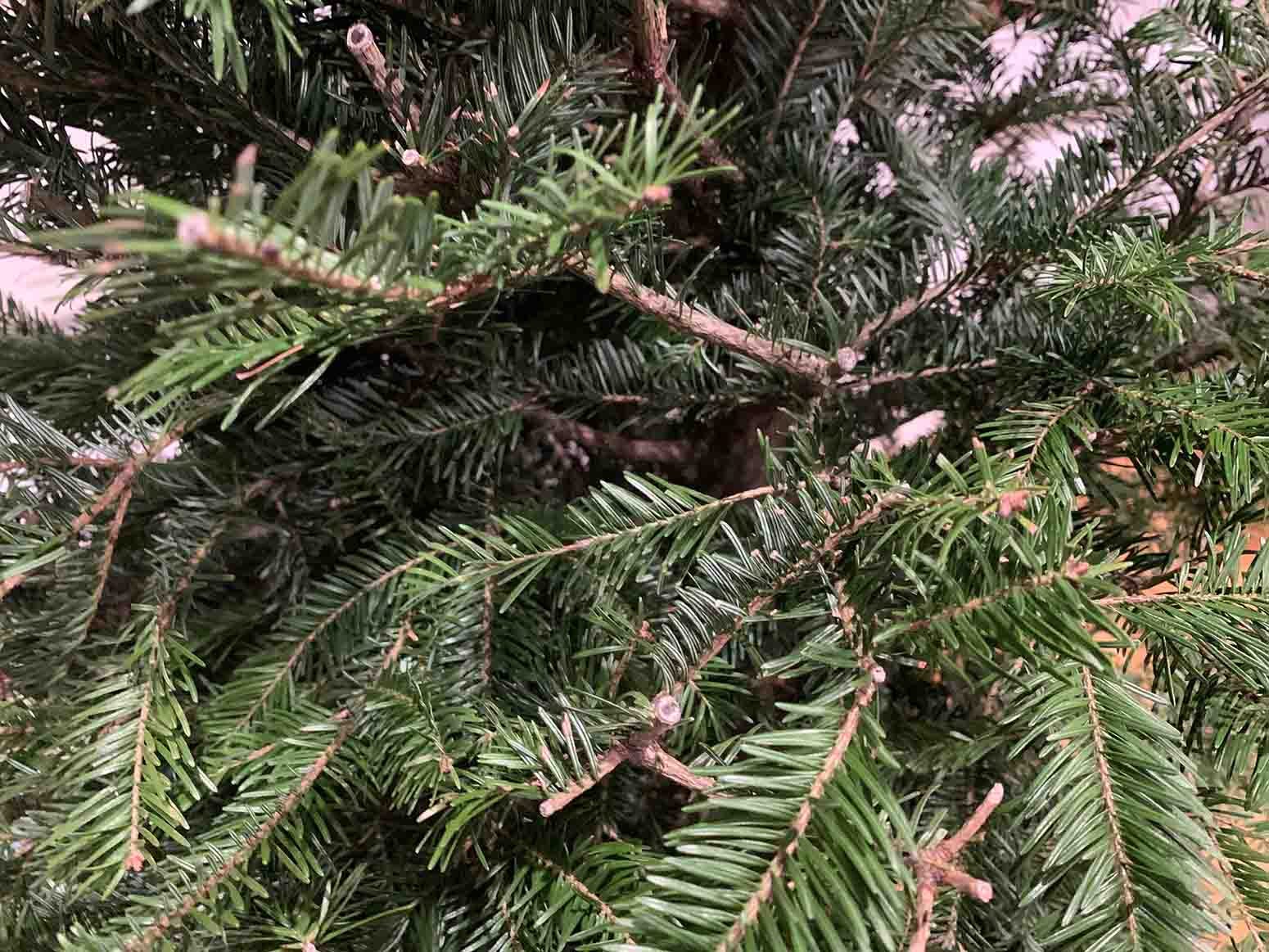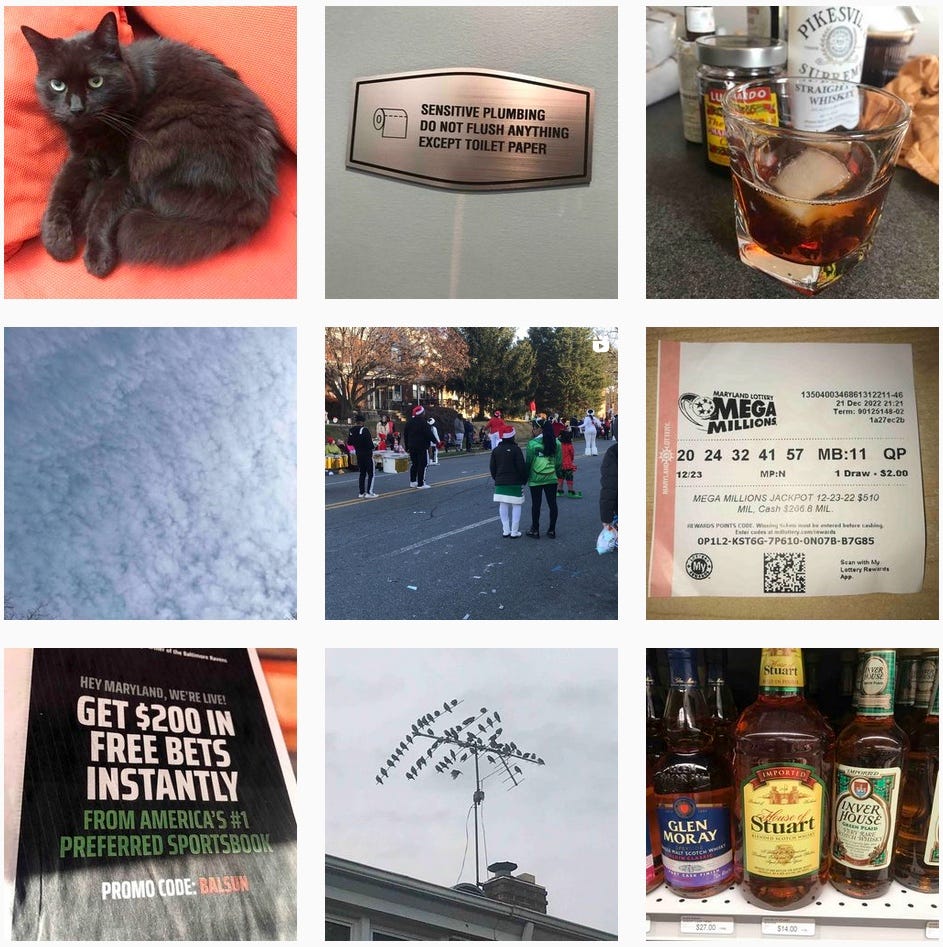Indignity Vol. 2, No. 101: Ruffled Fir
THE HOLIDAYS DEP'T.

Holding out for a tree, losing grip on the season.
THE CHRISTMAS TREE in the living room is bare. I'm still adjusting to there being a Christmas tree in here at all, as early as December 21. I have been a lifelong advocate of keeping the Christmas in Christmas—the tree should go up in time to be there to make things feel Christmassy on Christmas Eve. Then it stays up till Epiphany, or a day or two later if I feel lazy.
Heading up the road to the Christmas-tree farm and sawing down a tree was one of the last things we used to do, in my childhood, before the Christmas preparations turned into Christmas celebrations. It came after the cookie-baking, after the shopping. Sometime around when the presents needed wrapping, that was when the tree came in. The ornaments stayed in their box until all the other boxes from the attic were unpacked, till after the unwrapping and placement of the ceramic Nativity set in the dining room: the shepherds and sheep off to the right, the wise men and camels somewhere else entirely, the cow minding its own business, and Mary and Joseph and the donkey (one ear neatly repaired with glue) on the left-hand sideboard, lined up, still trekking toward Bethlehem. (The baby in the manger would be tucked away on a bookshelf across the room, awaiting His cue.) It wasn't an Advent tree.
As an adult in Manhattan, supervising two impressionable childhoods, I stuck to this principle, partly because I believe in it and partly because there were bargains to be had as Christmas Eve drew closer and the sketchy Quebcois tree-tenders in their sidewalk shacks began radiating the urge to clear the racks and get back over the border. It's a harrowing business, the New York tree trade, and I just wanted to get in and out of it with a little dignity and an acceptable tree.
Then the last weekend before Christmas 2020, my wife out went to run some errands and came back reporting that the trees along the way were already gone. The sellers had evidently shorted inventory to avoid getting stuck with a pandemic surplus, and the public had bought them out. I hurried out in a panic and found one stand still open, with a couple of tiny, scrawny trees, and paid whatever they were asking for one of them.
Last year, I tried to skip the bargain-hunting altogether and get a predictable retail-priced tree from Whole Foods on the 19th, only to discover that the supermarket's tree display had vanished for the season, and that the first sidewalk vendor I could find on Broadway was in a predatory mood. I managed to score a tree at a less unreasonable price, about a half mile further uptown, but clearly my whole system had collapsed.
I was forewarned and worried, this year, but also it felt as if something else had changed. Holding out till the last minute for the tree had always felt like a sound and correct approach, because the holiday atmosphere was so pervasive. The music and the lights and the bargains created an ever-increasing ambient festive pressure, filling the heart with the twinkling, secular joys of the season, until eventually the swelling feeling burst in through the door, carrying the tree with it. There was never any sense of scarcity.
This December, though? This December feels thin. Maybe it's just me. Even to form the thought maybe it's just me, though, is to think about having an individual, nonrepresentative holiday experience—to sense the barometer is dropping. Collective experience is still out of kilter. I can't picture what it would be like to melt into a holiday crowd, or to duck into one warm, bright shop after another after another. It was only just Thanksgiving, and then it was everyone being sick after Thanksgiving, and now—
As of this past Saturday, a full week before Christmas Eve, it was time to get the tree. There were still a few outside the corner store two blocks away, where they sell decent flowers the rest of the year, but they were going fast. I had 15 minutes to get there, get a tree, and get back before it was time to leave for the end-of-year dance presentation. The trees were divided between the overpriced ones and the really overpriced ones, and I went back and forth between them indecisively until the guy from the store offered me one of the bigger ones at the lower price.
I grabbed it, hurried home, and dropped it off. The dance presentation went fine, though they had to keep adjusting the spacing to fill in for all the kids who were out sick. The branches look a little bashed in around the bottom, and the bark at the base of the trunk got shredded by the metal pegs of the sidewalk stand. I was afraid it might have been girdled, but the needles still seem plump and attached after half a week. The lights can go on it tomorrow.

VISUAL CONSCIOUSNESS DEP’T.
The Holidays

More consciousness on Instagram.

SANDWICH RECIPE DEP’T.
WE PRESENT INSTRUCTIONS for the assembly of a select sandwich from The White House Cook Book; A Comprehensive Cyclopedia of Information for the Home, by Hugo Ziemann and Mrs. F. L. Gillette (Fanny Lemira), now in the public domain and available at archive.org for the delectation of all.
WATER CRESS SANDWICHES
Wash well some water cress and then dry them in a cloth, pressing out every atom of moisture as far as possible; then mix with the cress hard-boiled eggs chopped fine, and seasoned with salt and pepper. Have a stale loaf and some fresh butter, and with a sharp knife cut as many thin slices as will be required for two dozen sandwiches ; then cut the cress into small pieces, removing the stems ; place it between each slice of bread and butter, with a slight sprinkling of lemon juice; press down the slices hard, and cut them sharply on a board into small squares, leaving no crust. —Nantasket Beach.
If you decide to prepare and enjoy a sandwich or sandwiches inspired by these offerings, kindly send a picture to us at indignity@indignity.net.

Thank you for reading Indignity! We appreciate your interest and support, and we encourage you to find more of our work over at Popula.





